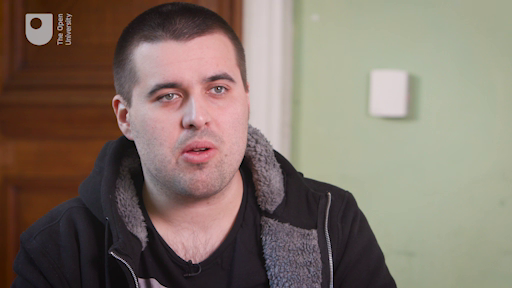Session 1: What is a learning disability?
Introduction

Transcript: Video 1
In this first session of the course you will consider the question: what is a learning disability? You will meet several people who have been labelled as having a learning disability, and you will be introduced to some definitions on the topic.
You will then find out how many people in the UK have a learning disability, and the sorts of places they live.
Finally, you will consider the rights that people with learning disabilities have, and whether it helps people to be labelled as having a learning disability.
In this session you will explore:
- what a learning disability is
- the different labels that have been used to describe people with learning disabilities and how people feel about those labels
- what life is like for people with more severe or profound learning disabilities
- some basic facts about the lives of people with learning disabilities
- people’s rights.
The Open University would really appreciate a few minutes of your time to tell us about yourself and your expectations for the course before you begin, in our optional start-of-course survey [Tip: hold Ctrl and click a link to open it in a new tab. (Hide tip)] . Participation will be completely confidential and we will not pass on your details to others.
